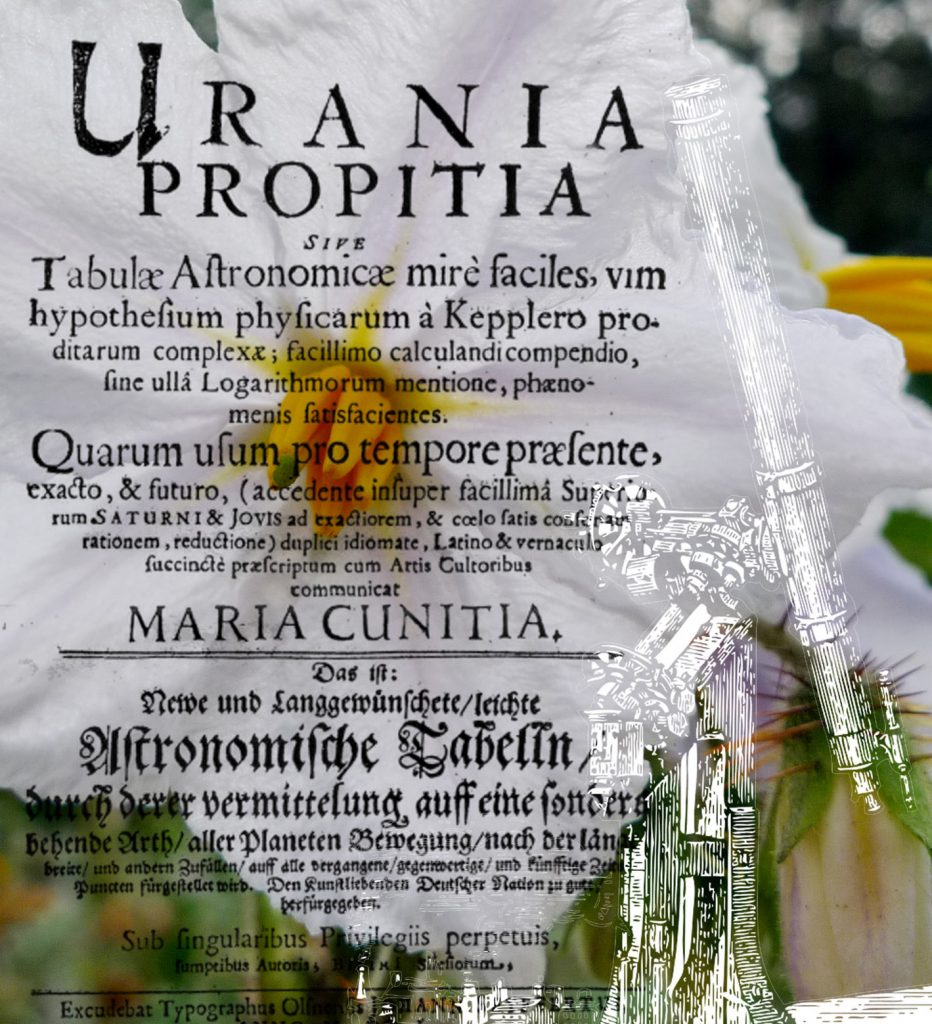14. Oct. 12:24
Switched into „Hidden elements“… I hear wavestorms, wind noise and an introduction to Maria Cunitz, one of the most learned women in astronomy. Born around 1610, Wołów, Silesia. The radio maker, a woman too, explains how Maria worked on a theory how „to use the positions of planets as a function of time.“
I continue to listen. There is some minuet music playing and blue&light golden rays of sun light up the world behind my window pane. I start imagining: a woman at as telescope in a dark striped robe on a swivel chair. Now she gets up hastily and walks to the table, where a finely ornamented glass holds a green herbal liquid. The walls of the room are high and made from stone. A piece of embroidered tapestry covers a hidden entrance. It shows wild deer and a faun blowing a trumpet under a canopy of autumn red leaves. Strange, I think, how unusual to have autums colors in those embroidered forests.
The astronomer returns to her seat at the teleskope, she arranges the folds of her dress before swinging the ocular towards her eyes. It is silent in the observatory chamber. Silent, except for Mrs. Cunitz’ breath and a very very faint squeak of the chair when she shifts her body weight from time to time.
—
Maria Cunitz ground-breaking work was URANIA PROPITIA SIVE,, published in 1650, a compendium containing „New and long wished-for astronomic charts“ based on Keplers findings. The minor planet 12624 Mariacunitia is named in her honour, says Wikipedia
